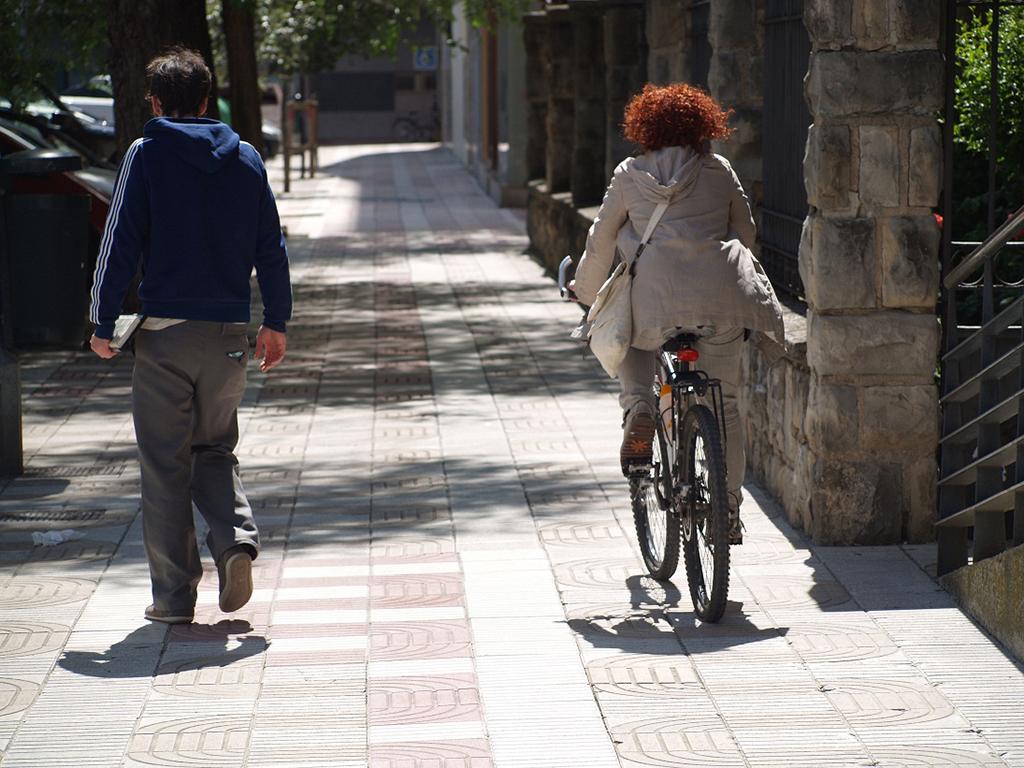Original article: Santiago: Estudio confirma que las ciclovías reducen los conflictos entre peatones y ciclistas
«Cycles and Their Conflicts with Other Transport Modes: An Analysis in Santiago Streets» is the title of the research conducted by urban planners from the University of Chile, Rodrigo Mora, Tomás Cox, and Geraldine Herrmann, where the behavior of 9,747 cyclists in Providencia and downtown Santiago was recorded on video.
The main conclusion: safe infrastructure is crucial for road coexistence and promoting active transportation.
«In a context where various means of transport converge—buses, cars, motorcycles, Metro, bicycles, scooters, rollerblades, and pedestrians—conflicts over the use of public space have increased. This study seeks to understand the main issues and their causes—specifically between pedestrians and cyclists—where the use of sidewalks is a significant annoyance for walkers. Understanding the causes allows us to seek effective solutions to promote active transport and coexistence,» explained researcher Rodrigo Mora.
To achieve this goal, the specialist noted, cameras were installed at 12 strategic points on busy avenues in the Providencia and downtown Santiago communes, including Av. Los Leones, Av. Ricardo Lyon, Av. Eliodoro Yáñez, and Av. Pedro de Valdivia.
«In most research in this area, cyclists are asked how they behave, which is not the same as observing what they actually do. This is a four-month study: we recorded from Monday to Thursday during peak hours, capturing nearly 9,747 cyclists in highly populated areas,» detailed Rodrigo Mora.
The results were revealing: «Overall, when we observe streets with bike lanes, 93.5% of cyclists use them. In contrast, on streets without bike lanes, 43.4% of cyclists use the sidewalk, while 56.6% use the street. This indicates that bike lanes significantly impact how the street is utilized,» the academics noted.
Furthermore, the study indicates that the presence of cobblestone streets also pushes cyclists to use the pedestrian sidewalk: «Those who use the sidewalk the most are women and those moving against the flow of car traffic,» making these groups the primary beneficiaries of bike infrastructure development.

Finally, the academics proposed three concrete measures that could mitigate conflicts in public spaces:
- Prioritize continuous and protected bike lanes, avoiding surfaces that create bumps like cobblestones.
- Standardize the width and materials of bike lanes, addressing discontinuities in them.
- Implement traffic calming measures in residential and commercial areas to allow better coexistence between cyclists and motor vehicles.
«In perspective, investing in improving safe cycling infrastructure can be part of the solution for cities facing issues of pollution, health, noise, and traffic. Bicycles as a means of transport reduce costs for cities and society by decreasing greenhouse gas emissions, reducing air pollution, enhancing road safety, and promoting a healthier population,» the researchers emphasized.
Santiago, One of the Cities with the Highest Bicycle Usage
The usage of bicycles in 2012 was at 4%, according to that year’s Origin-Destination Survey (EOD). However, the latest mobility assessment of 2024, conducted by the Sustainable Urban Development Center (CEDEUS), of which academic Rodrigo Mora is a part, shows that bicycles now account for 7.8% of total trips.
«This is not insignificant. Santiago, Chile, ranks among the top cities in Latin America. Notably, London, a city globally recognized for its transformation in favor of bicycles, had 4.5% of trips made by bicycle in 2022. In the central region of Paris, another city aggressively promoting cycling, nearly 11% of trips are currently made by bicycle,» Professor Mora contextualized.

El Ciudadano



